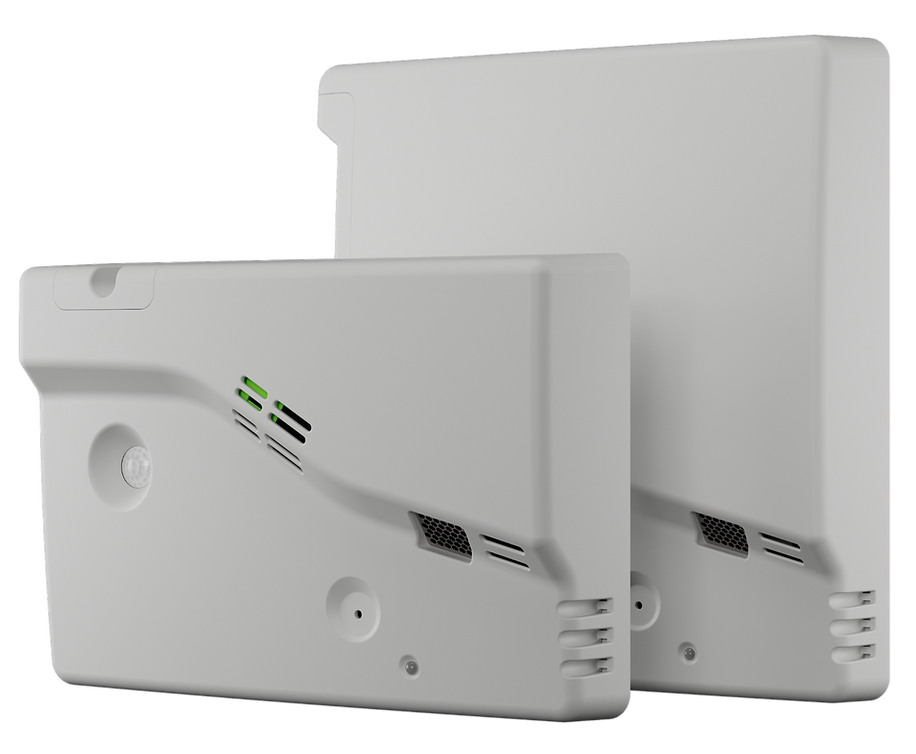In recent years, the rise of vaping, particularly among young people and in restricted environments, has presented a new challenge for public health and safety. While vaping is often marketed as a safer alternative to smoking, its presence in schools, workplaces, and other public spaces raises serious concerns about air quality and regulatory compliance. The answer? Vape sensors. This blog will explore the importance of installing vape sensors and how Teledata can help create a vape-free environment by providing innovative detection solutions.

Why Installing Vape Sensors is Essential
1. Health and Safety Concerns: While vaping is often considered less harmful than traditional smoking, it is not without risks. E-cigarette aerosols can contain harmful substances like nicotine, volatile organic compounds (VOCs), and heavy metals, which pose potential health risks, especially to children and non-vaping individuals. In schools, where the safety of students is paramount, the presence of vaping can exacerbate respiratory issues and other health problems.
2. Regulatory Compliance: Many schools, workplaces, and public facilities have strict no-smoking policies that extend to vaping. However, enforcing these policies can be challenging without proper detection systems. Vape sensors can help institutions comply with laws and regulations by monitoring areas for unauthorized vaping, ensuring that policies are upheld, and providing evidence when violations occur.
3. Maintaining a Clean Environment: Vaping in indoor spaces can lead to residue build-up on walls, ceilings, and other surfaces, affecting the cleanliness and air quality of the environment. Over time, this residue can degrade the air quality and create unpleasant odors. Vape sensors help maintain a clean and safe environment by providing real-time alerts when vaping is detected, allowing for immediate action to be taken.
4. Deterrence and Behavioral Change: The installation of vape sensors acts as a deterrent. When individuals know that a space is monitored for vaping, they are less likely to engage in the behavior. This can be particularly effective in school environments, where the goal is not just to detect but also to discourage vaping among students. By creating a culture of compliance, vape sensors can help foster a healthier environment.
Types of Vape Sensors
There are various types of vape sensors available, each designed to detect specific particles and chemicals emitted during vaping. Here are some of the most common types:
1. Particle Detection Sensors: These sensors detect the presence of fine particulate matter (PM) that is typically emitted during vaping. They can identify both the large droplets and the ultrafine particles that make up the aerosol produced by e-cigarettes. Particle detection sensors are effective in environments where vaping occurs frequently, such as schools and certain workplaces.
2. Chemical Detection Sensors: These sensors detect specific chemicals commonly found in vape aerosols, such as nicotine or propylene glycol. By monitoring for these chemicals, chemical detection sensors can provide more precise detection of vaping activity, especially in environments where distinguishing between smoke and vapor is crucial.
3. Air Quality Monitors: These devices measure the overall quality of the air, including the presence of VOCs and other harmful substances. While not specifically designed for vaping detection, they can be used in conjunction with other sensors to provide a comprehensive understanding of air quality in a given space.
4. Multi-Sensor Systems: Some advanced vape detection systems combine multiple sensors to detect both particulate matter and specific chemicals. These systems offer higher accuracy and can be integrated with existing security systems, providing real-time alerts and data analytics for better monitoring and enforcement.
How Teledata Leads the Way
Teledata is at the forefront of creating safe, vape-free environments with their advanced vape detection solutions. By offering a range of vape sensors tailored to different environments—from schools to corporate offices—Teledata ensures comprehensive coverage and reliable detection.
Customizable Solutions: Teledata understands that every environment is unique. That’s why they provide customizable vape detection solutions that can be tailored to meet the specific needs of each client. Whether it’s a school looking to enforce a no-vaping policy or a business wanting to maintain a clean, healthy workplace, Teledata has the expertise to deliver effective solutions.
Integration with Existing Systems: One of the standout features of Teledata’s vape sensors is their ability to integrate seamlessly with existing security and monitoring systems. This integration allows for centralized monitoring and management, making it easier for institutions to maintain a vape-free environment.
Expert Installation and Support: With years of experience in the industry, Teledata provides expert installation services and ongoing support to ensure that vape detection systems are functioning optimally. Their team of professionals is dedicated to helping clients create safer, healthier environments.
As vaping continues to present challenges in schools, workplaces, and public spaces, the need for effective detection solutions has never been more pressing. Installing vape sensors is a proactive step toward ensuring a clean, safe, and compliant environment. With a range of innovative vape detection solutions, Teledata is ready to help you create a vape-free space that protects health, upholds regulations, and promotes positive behavior. Contact Teledata today to learn more about how their vape sensors can benefit your environment.


Recent Comments